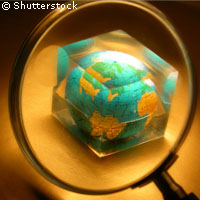Smaller ozone hole no reason to relax, experts say
The ozone hole over the South Pole has shrunk. New measurements made by the European Space Agency's (ESA) Envisat satellite show that it is 30% smaller than in record-breaking 2006, when ozone loss reached 40 million tonnes. However, the results do not indicate that the ozone layer is recovering, experts emphasise. 'This year's ozone hole was less centred on the South Pole as in other years, which allowed it to mix with warmer air, reducing the growth of the hole because ozone is depleted at temperatures less than -78° Celsius,' says Ronald van der A, senior project scientist at the Royal Dutch Meteorological Institute (KNMI). Its smaller size was rather due to natural variations in temperature and atmospheric dynamics, Dr van der A adds. In order to measure ozone loss, the area as well as the depth of the hole is analysed. This year, the area where the ozone layer measures less than 220 Dobson units - a unit that describes the layer's thickness in a column directly above the location being measured - is 24.7 million square kilometres. This roughly corresponds to the size of North America. ESA data are used for ozone monitoring and forecasting. This near real-time service is part of the PROMOTE (PROtocol MOniToring for the Global Monitoring for Environment and Security Service Element) consortium, made up of more than 30 partners from 11 countries. Three atmospheric instruments are onboard the space agency's satellite Envisat, enabling it to localise ozone depletion and keep track of possible changes. In combination with meteorological data and wind field models, scientists can assess the size of the hole and forecast the level of harmful ultraviolet (UV) radiation. Over the last decade, the protective ozone layer, found about 25 kilometres above the Earth in the stratosphere, has thinned by about 0.3% per year globally. This is due to destructing gases such as chlorine and bromine, stemming from man-made products such as chlorofluorocarbons (CFCs) or bromofluorocarbons. These compounds are highly stable, but will split under the influence of sunlight and stratospheric clouds. The resulting radicals will then react with the ozone molecules, in turn breaking them down into individual oxygen molecules.



